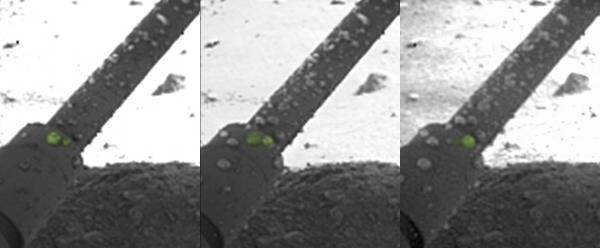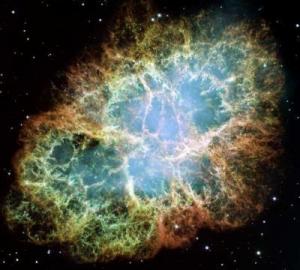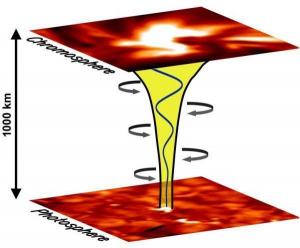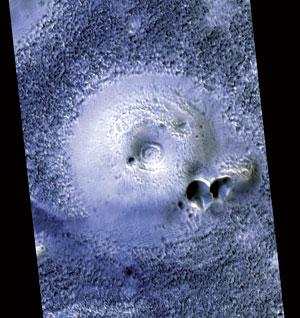
© NASA/JPL-Caltech/University of Arizona/Max Planck InstituteDroplets on a leg of the Mars Phoenix lander are seen to darken and coalesce. Nilton Renno, a professor in the Department of Atmospheric, Oceanic and Space Sciences says this is evidence that they are made of liquid water.
Salty, liquid water has been detected on a leg of the Mars Phoenix Lander and therefore could be present at other locations on the planet, according to analysis by a group of mission scientists led by a University of Michigan professor. This is the first time liquid water has been detected and photographed outside the Earth.
"A large number of independent physical and thermodynamical evidence shows that saline water may actually be common on Mars," said Nilton Renno, a professor in the U-M Department of Atmospheric, Oceanic and Space Sciences and a co-investigator on the Phoenix mission.
"Liquid water is an essential ingredient for life. This discovery has important implications to many areas of planetary exploration, including the habitability of Mars."
Renno will present these findings March 23 at the Lunar and Planetary Science Conference in Houston.
Previously, scientists believed that water existed on Mars only as ice or water vapor because of the planet's low temperature and atmospheric pressure. They thought that ice in the Red Planet's current climate could sublimate, or vaporize, but they didn't think it could melt.



